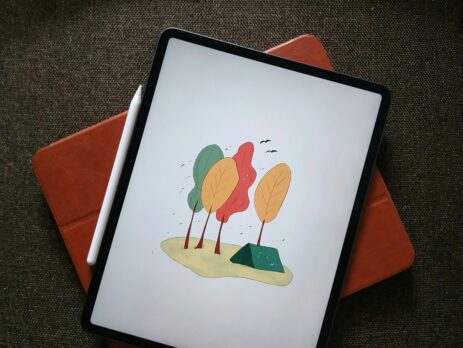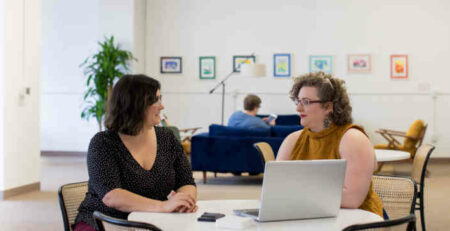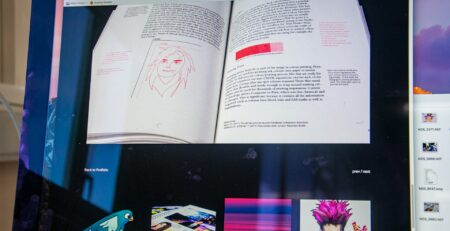Top 10 Tools Every Creative Professional Needs!
As the world of creative work continues to evolve, the tools and resources at a professional’s disposal can significantly impact productivity and creativity. Whether you’re a graphic designer, a writer, or a digital marketer, having the right tools can streamline your workflow, enhance your creative output, and keep you ahead in a competitive landscape.
From sophisticated software to ergonomic furniture, the modern creative workspace is more than just a desk and a computer. It’s a dynamic environment designed to inspire and support creativity. This guide explores the top 10 essential tools that every creative professional should consider incorporating into their workspace to foster innovation and efficiency.
Firstly, digital tools and software are fundamental. Programs like Adobe Creative Suite offer comprehensive solutions for graphic design, video editing, and more, making them indispensable for creatives. Platforms like Canva also provide user-friendly options for those looking to quickly produce high-quality designs without the steep learning curve of more complex software.
Secondly, an organized and conducive physical workspace is crucial. Investing in a good quality ergonomic chair and desk can prevent the physical strain that often comes with long hours of creative work. Moreover, the layout of your workspace should promote efficiency, with all necessary tools within easy reach, and minimal clutter.
Thirdly, technology like high-resolution monitors and tablets can significantly enhance the precision of digital creative work. Tools such as the Apple iPad Pro or graphic tablets from Wacom allow for a more hands-on approach to digital creativity, providing flexibility that traditional mouse and keyboard setups cannot match.
Fourthly, cloud storage and collaboration tools such as Google Drive or Dropbox are essential for modern creatives who collaborate with teams or need to access their work from multiple devices. These tools not only help in storing large files but also in sharing work-in-progress with clients or team members seamlessly.
Fifth, staying updated with the latest trends and technologies is crucial. Subscriptions to industry magazines, access to platforms like OpenAI, or membership in professional networks can provide invaluable insights and keep you at the cutting edge of your field.
Sixth, for those involved in web and digital design, UX/UI design tools are indispensable. Websites like Behance offer a platform to showcase creative work and get inspired by others. Additionally, prototyping tools like Sketch or Adobe XD play a critical role in creating interactive prototypes to test and refine designs before they go live.
Seventh, effective communication tools are vital. Whether it’s for presenting ideas to clients or collaborating with remote teams, tools like Slack or Zoom can facilitate smooth communication and ensure that everyone is on the same page.
Eighth, creative inspiration tools such as mood board creators or design inspiration websites can help in conceptualizing and visualizing ideas. Resources like Befonts for unique fonts can also add that extra flair to your designs.
Ninth, project management software like Trello or Asana can help keep projects on track. These tools are essential for managing deadlines, tasks, and team responsibilities, ensuring that nothing falls through the cracks.
Tenth, personal development books and resources can provide creative professionals with the motivation and strategies needed to enhance their skills and manage their careers effectively. Investing time in learning and personal growth is just as important as investing in physical tools.
Most Asked Questions About Revolutionizing Your Workspace
- What are the best ergonomic practices for setting up a creative workspace?
- How do digital tools like Adobe Creative Suite enhance creative productivity?
- What are the advantages of using cloud storage and collaboration tools in creative work?
- How can high-resolution monitors and tablets improve the quality of creative outputs?
- Why is it important for creatives to stay updated with industry trends and technologies?
- What role do UX/UI design tools play in web and digital design?
- How can mood boards and design inspiration websites aid in the creative process?

Best Ergonomic Practices for Setting Up a Creative Workspace
Creating an ergonomic workspace is crucial for any professional spending long hours at a desk, especially creatives who need their environment to be both comfortable and conducive to generating ideas. An ergonomic setup not only helps in reducing the risk of strain injuries but can also enhance productivity by making the workspace more functional.
The first step in setting up an ergonomic workspace is choosing the right chair. An ideal chair for a creative professional should have adjustable height, lumbar support, and flexible armrests to accommodate various postures throughout the day. The balance between work and comfort is essential for long-term sustainability in any creative field.
Next, the desk should be at a height that keeps your elbows at a 90-degree angle while typing or drawing. If possible, invest in a sit-stand desk to allow for changes in posture throughout the day, which can help in reducing fatigue and boosting circulation.
Proper lighting is another critical aspect. Natural light is ideal, but if that’s not available, ensure that your workspace is equipped with ample artificial lighting that mimics natural light. Avoid glare on screens, as it can cause eye strain and headaches.
Organizing the workspace to minimize clutter can also significantly impact productivity and creativity. Use drawer organizers, cable management systems, and desktop organizers to keep tools and materials in order. A clean desk can lead to a clearer mind, which is essential in creative professions.
Monitor placement is also vital; the top of your monitor should be at or slightly below eye level, and about an arm’s length away. This setup helps in reducing neck strain and promotes better posture.
Incorporating personal elements that inspire creativity can also be part of an ergonomic setup. Whether it’s art, plants, or personal mementos, these items can make a workspace feel more personal and stimulating.
Regular breaks are also part of ergonomic practices. Utilizing software that reminds you to take breaks or following techniques like the Pomodoro Technique can help in managing time effectively while ensuring that you get necessary rest.
For those who spend a significant amount of time on calls or in virtual meetings, investing in a good quality headset can reduce strain and improve communication clarity.
Lastly, consider the overall environment of your workspace including the temperature, air quality, and noise levels. An environment that is too hot, cold, or noisy can distract and reduce efficiency, so it’s important to create a space where you can focus and be productive.
By following these ergonomic practices, creative professionals can create a workspace that not only boosts their health and well-being but also enhances their creative output.
Enhancing Creative Productivity with Adobe Creative Suite
Adobe Creative Suite remains a cornerstone in the arsenal of tools for creative professionals. This comprehensive collection of software provides a vast array of features that cater to various aspects of creative work, from graphic design and video editing to web development and photography.
One of the primary benefits of Adobe Creative Suite is its integration capabilities. Programs within the suite such as Photoshop, Illustrator, and Premiere Pro are designed to work seamlessly with each other, making it easier for creatives to switch between tasks without disrupting their workflow.
Adobe’s constant innovation means that users have access to the latest advancements in creative software. Features like AI-driven tools in Photoshop can significantly speed up editing processes and enhance the creative capabilities of professionals.
For graphic designers, Illustrator provides powerful tools for vector art creation, making it ideal for logo and graphic design. The precision and versatility of Illustrator make it indispensable for professionals looking to create scalable designs.
In the realm of video editing, Premiere Pro offers robust editing tools that are used by industry professionals worldwide. Its ability to handle high-resolution video formats and complex editing timelines makes it a go-to tool for video editors.
Adobe Creative Suite also includes services like Adobe Stock, which provides users with access to millions of high-quality images, graphics, and videos that can be used in their projects, thereby streamlining the creative process.
Moreover, Adobe’s commitment to education and community support is evident through their extensive tutorials and active user forums. These resources are invaluable for both novice and experienced users who want to continuously improve their skills.
Integration with cloud services like Adobe Creative Cloud ensures that all files are backed up and accessible from any device, facilitating easier collaboration and file sharing among team members.
Adobe’s mobile apps, such as Adobe Capture and Photoshop Express, allow creatives to work on the go, ensuring that they can capture inspiration whenever and wherever it strikes.
Lastly, Adobe’s pricing plans offer flexibility for different types of users, from students to professionals, making it accessible to a wide range of creatives looking to invest in high-quality creative tools.
Overall, Adobe Creative Suite is more than just software; it’s a comprehensive ecosystem that supports the creative process from conception to completion. Its continued relevance in the creative industry is a testament to its capability to adapt and evolve with the needs of creative professionals.
Advantages of Cloud Storage and Collaboration Tools in Creative Work
In today’s digital age, cloud storage and collaboration tools have become essential for creative professionals. These tools not only provide safe and accessible storage solutions but also enhance the ability to collaborate on projects in real-time, regardless of the physical location of the team members.
Cloud storage services like Google Drive, Dropbox, and OneDrive offer vast storage spaces where creatives can store large files such as high-resolution images and video content without worrying about the storage limits of their local hard drives.
One of the significant advantages of using cloud storage is the ability to access files from anywhere and any device. This flexibility is particularly beneficial for freelancers or professionals who travel frequently and need to access their work on the go.
Collaboration tools integrated with these cloud services, such as Google Docs or Microsoft Teams, allow multiple users to work on the same document simultaneously. This real-time collaboration is crucial for teams working on tight deadlines and ensures that everyone has the most updated version of the project.
Version control is another critical feature offered by many cloud storage systems. It allows users to revert to previous versions of a document, which is invaluable in managing edits and ensuring that no important changes are lost.
Security is a top priority with cloud services, which often offer advanced encryption and security measures to protect sensitive data from unauthorized access. This security is especially important for creatives who handle client data and need to ensure confidentiality.
Cloud-based tools also facilitate easier client interactions. Sharing files with clients can be as simple as sending a link, and permissions can be customized to control what clients can see or do with the files.
For project management, tools like Asana and Trello integrate with cloud storage services to provide a comprehensive overview of project timelines, tasks, and communications. This integration helps keep projects organized and on track.
Cost-effectiveness is another benefit of cloud services. Instead of investing in physical storage and servers, creatives can use cloud services which offer scalable plans based on storage needs and team size.
Lastly, cloud services often come with customer support and regular updates to improve functionality and user experience, ensuring that creative teams can maintain focus on their core work without worrying about technical issues.
Overall, cloud storage and collaboration tools are not just about storing data; they are about enhancing the efficiency and creativity of teams by making collaboration more accessible, secure, and efficient.
Impact of High-Resolution Monitors and Tablets on Creative Outputs
The quality of the tools used by creative professionals can significantly affect the accuracy and quality of their work. High-resolution monitors and tablets are such tools that have a profound impact on the creative process, particularly in fields like graphic design, video editing, and digital art.
High-resolution monitors provide a greater pixel density, which results in sharper, clearer images. This clarity is crucial for designers who need to pay attention to the fine details of their work, whether it’s editing a photograph or designing a user interface.
Color accuracy is another critical factor where high-resolution monitors excel. Monitors that cover a wider color gamut and offer precise color calibration ensure that the colors you work with are consistent and true to life, which is especially important for print and web design where color precision is key.
Tablets like the Apple iPad Pro or Microsoft Surface have revolutionized the way creatives work by combining portability with powerful features. With high-resolution touch screens and sensitive stylus pens, these tablets allow artists and designers to draw and edit directly on the screen as if they were working on paper.
The use of tablets can also speed up the creative process. Features like gesture controls and customizable buttons can make workflows more efficient, allowing for quicker navigation and execution of tasks.
Tablets and high-resolution monitors are also beneficial for collaborative reviews. The ability to zoom in and discuss fine details or quickly make edits during a meeting can enhance the collaborative process and lead to better final products.
Ergonomically, tablets offer a more natural drawing angle, which can reduce strain on the hands and wrists compared to using a mouse or trackpad. This ergonomic advantage is significant for professionals who spend long hours on detailed work.
For those who work in animation or video editing, high-resolution monitors are essential for accurately previewing how the final product will appear. This accuracy helps in making more informed editing decisions, ultimately leading to a higher quality output.
Moreover, the flexibility of tablet use, being able to work from anywhere, empowers creatives to capture inspiration whenever it strikes, whether they are in the studio or out in the field.
Investing in high-quality monitors and tablets can also be seen as a long-term investment in your professional toolkit. These tools are built to last and come with features that are designed to meet the evolving needs of creative professionals.
Overall, the use of high-resolution monitors and tablets not only enhances the quality of creative outputs but also improves the overall workflow, making the creative process more enjoyable and productive.
Importance of Staying Updated with Industry Trends and Technologies for Creatives
In the fast-paced world of creative industries, staying updated with the latest trends and technologies is not just beneficial; it’s essential for maintaining a competitive edge. The continuous evolution in tools, techniques, and mediums means that what was relevant yesterday might be outdated tomorrow.
Understanding current trends allows creatives to produce work that resonates with contemporary audiences. Trends can influence consumer behavior, and being aware of these changes can help creatives craft messages and designs that are effective and engaging.
Technology plays a pivotal role in the creative industries. New software and tools can drastically enhance efficiency and capabilities. For instance, the rise of AI tools in design and media has opened up new possibilities for personalization and automation that were not possible before.
Professional development is another critical aspect of staying updated. Workshops, courses, and webinars are valuable resources for learning new skills and techniques. Platforms like OpenAI offer insights into the latest advancements in AI and machine learning, which are increasingly relevant in various creative fields.
Networking with other professionals can also provide insights into industry trends and technologies. Attending industry conferences, participating in forums, and joining professional organizations can lead to exchanges that enrich one’s understanding and approach to creative work.
Subscribing to industry publications and following thought leaders on social media can also be a convenient way to keep abreast of new developments. These resources often provide case studies, articles, and tutorials that can inspire and inform.
For freelancers and agency professionals, staying updated is also crucial for client relations. Clients look for experts who are knowledgeable about the latest trends and technologies in their industry. Being able to offer the newest and most effective solutions can set you apart from competitors.
Adopting new technologies can also lead to cost savings in the long run. For example, cloud-based tools can reduce the need for physical storage and streamline collaboration, reducing overhead costs.
Moreover, understanding emerging technologies can open up new career opportunities. As industries evolve, new roles that require knowledge of the latest technologies are created. Staying informed can position you to take advantage of these opportunities as they arise.
Ultimately, staying updated with industry trends and technologies not only enhances a creative professional’s skill set but also enriches their creative vision, enabling them to produce innovative and impactful work that stands out in a crowded market.
Role of UX/UI Design Tools in Web and Digital Design
UX/UI design is at the heart of creating effective and engaging digital experiences. As such, the tools used in UX/UI design play a critical role in shaping how users interact with digital products. From websites to mobile apps, the right UX/UI design tools can make the difference between a product that is merely functional and one that is truly compelling.
Tools like Sketch, Adobe XD, and Figma offer designers a range of functionalities that are specifically tailored for UX/UI design. These tools provide features like wireframing, prototyping, and collaboration, which are essential for designing intuitive user interfaces.
Wireframing is one of the foundational elements of UX/UI design, and tools like Balsamiq or Axure are perfect for creating quick and easy wireframes. These tools help designers layout the structure of web pages or apps without getting caught up in design details, focusing instead on usability and user flow.
Prototyping is another crucial aspect, as it allows designers to create interactive models of their designs. This interactivity enables testing and refining of user interfaces before they are developed. Tools like InVision and Adobe XD facilitate this process by allowing designers to simulate how a user will interact with the interface, making it possible to identify and rectify usability issues early in the design process.
Collaboration features are also a significant advantage of modern UX/UI design tools. Platforms like Figma allow multiple designers to work on the same project simultaneously, in real-time. This feature is incredibly beneficial for teams that are distributed across different locations, as it ensures consistency and efficiency in the design process.
Integration with other tools and platforms is another benefit of using specialized UX/UI design tools. For example, Adobe XD’s integration with Adobe Creative Suite allows designers to seamlessly use assets created in Photoshop or Illustrator in their UX/UI projects. This integration streamlines the workflow and saves time.
Accessibility features are increasingly becoming a part of UX/UI design tools, reflecting the growing importance of creating inclusive digital products. Tools like Axure and Adobe XD include features that help designers ensure their designs meet accessibility standards, which is crucial for reaching a broader audience.
User testing is also facilitated by many UX/UI design tools. Tools like Lookback.io integrate with design platforms to allow real-time user testing and feedback, which is invaluable for refining user interfaces and ensuring they meet user needs.
Moreover, the continuous updates and community support provided by these tools mean that designers have access to the latest features and can learn from a community of peers. This aspect is particularly beneficial in a fast-evolving field like UX/UI design.
For those looking to learn more about UX/UI design, resources like What Are the Best Prototyping Tools for UX/UI Designers? offer valuable insights into choosing the right tools for different needs.
In conclusion, UX/UI design tools are not just software; they are an integral part of the digital design ecosystem that empowers designers to create more effective, engaging, and inclusive digital experiences. Their role in the web and digital design landscape is indispensable, driving innovation and excellence in user interface design.
How Mood Boards and Design Inspiration Websites Aid in the Creative Process
Mood boards and design inspiration websites are essential tools for creative professionals. They serve as a visual and conceptual foundation, helping to set the tone and direction for projects. These tools are particularly useful in the initial stages of the creative process when ideas are being formed and refined.
Mood boards help in consolidating and presenting aesthetic and thematic elements in a cohesive manner. They can include images, color palettes, typography, and other visual inspirations that represent the feel and style of the project. Tools like Pinterest or the creation of physical boards can aid significantly in this visual exploration.
Design inspiration websites such as Behance and Dribbble provide a platform for creatives to showcase their work and view others’ projects. These sites are not only a source of inspiration but also a community where feedback can be exchanged, helping creatives to refine their ideas and techniques.
The use of mood boards and design inspiration websites also facilitates better communication with clients and team members. They make abstract concepts more tangible, making it easier for non-creatives to understand and contribute to the creative process.
Furthermore, these tools can help in overcoming creative blocks. Exploring the vast array of styles and ideas presented can spark new ideas or offer a new perspective on a stalled project.
For those involved in branding and advertising, mood boards can be particularly useful in aligning the visual identity of a brand with its strategic goals. They ensure that every element of the creative output is coherent with the brand’s message and audience expectations.
Additionally, mood boards and design inspiration websites can keep professionals updated on current trends and popular styles within the industry. This knowledge is crucial for staying relevant and competitive in the market.
For practical tips on creating effective mood boards, resources like 10 Brainstorming Rules can provide guidance on how to leverage these tools to generate and organize ideas effectively.
In summary, mood boards and design inspiration websites are more than just collections of images. They are dynamic tools that enhance creativity, communication, and conceptual clarity in the creative process. Their role in facilitating creative exploration and expression is invaluable for professionals across various creative disciplines.
Conclusion
Revolutionizing your workspace with the right tools and practices is not just about enhancing productivity; it’s about creating an environment that fosters creativity, collaboration, and personal growth. From ergonomic setups that protect your health to advanced software that pushes the boundaries of what’s possible creatively, each element plays a crucial role in shaping a productive and inspiring workspace.
Adopting cloud storage and collaboration tools can transform the way creative teams work, making projects more manageable and communication more straightforward. High-resolution monitors and tablets elevate the quality of creative outputs, ensuring that every detail is perfect.
Staying informed about industry trends and technologies prepares creatives for future challenges and opportunities, ensuring that they remain competitive and relevant. Meanwhile, UX/UI design tools are indispensable for creating digital products that are not only functional but also delightful to use.
Mood boards and design inspiration websites serve as vital sources of creative inspiration, helping to visualize and refine ideas effectively. They are essential for communicating concepts and ensuring that every project starts with a clear and compelling vision.
Ultimately, the tools and practices discussed are more than just investments in efficiency; they are investments in your creative future. Furthermore, staying connected with a creative staffing agency like icreatives staffing can provide access to top-tier talent and industry insights, ensuring your team remains at the forefront of the creative sector. Embracing these resources can lead to not only better work but also a more fulfilling and sustainable career in the creative industries.












